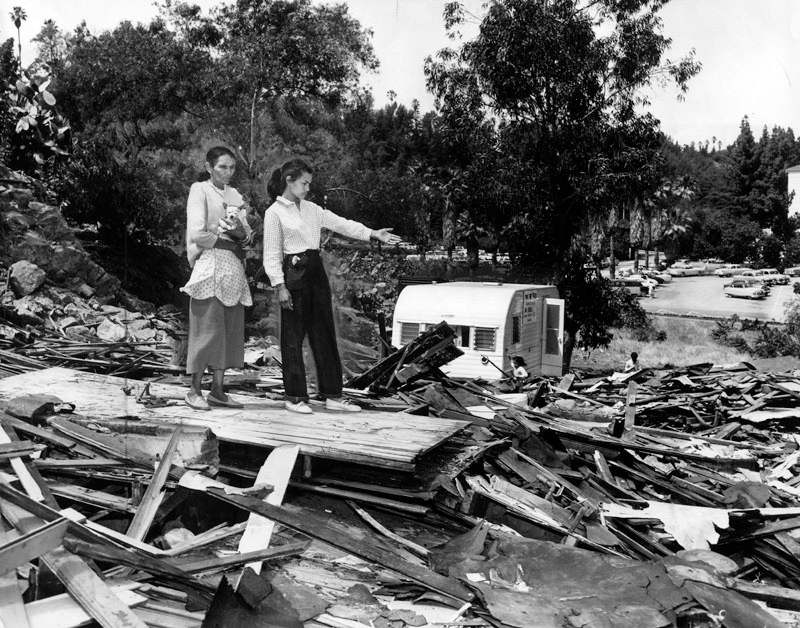Teaching Activity. By Linda Christensen. Rethinking Schools. 9 pages.
Teaching about patterns of displacement and wealth inequality through the history of Palo Verde, La Loma, and Bishop communities and the building of Dodger Stadium.
Continue reading
Teaching Activity. By Brady Bennon. Rethinking Schools. 7 pages.
A high school humanities teacher introduces students to the human cost of climate change, building empathy for climate change refugees like those in the island nation of Kiribati.
Continue reading
Teaching Activity. By Adam Renner, Bridget Brew, and Crystal Proctor. Rethinking Schools. 5 pages.
An article describing how math teachers in a San Francisco high school shed light on the ways economics and racism affect education, housing, and job opportunities.
Continue reading
Teaching Activity. By Adam Sanchez. Rethinking Schools. 12 pages.
A trial role play asks students to question the role played by the U.S. government and other international actors in the 2010 earthquake.
Continue reading
Teaching Activity. By Brian C. Gibbs. Rethinking Schools. 6 pages.
A teacher uses the activist history of Theodore Roosevelt High School in East Los Angeles to pose students the question: “What would you be willing to do to create change?"
Continue reading
Teaching Activity. By Julian Hipkins III, Deborah Menkart, Sara Evers, and Jenice View.
Role play on the Mississippi Freedom Democratic Party (MFDP) that introduces students to a vital example of small “d” democracy in action. For grades 7+.
Continue reading
Teaching Activity. By Bill Bigelow and Norm Diamond. 14 pages.
In this role play activity, students assume the roles of union members and attempt to figure out how to respond to a threatened plant closure.
Continue reading
Teaching Activity. By Bill Bigelow and Norm Diamond. 3 pages.
This lesson introduces students to Bertolt Brecht’s poem, A Worker Reads History. Students reflect on the creative role of workers in making history.
Continue reading
Teaching Activity. By Bill Bigelow and Norm Diamond. 7 pages.
This lesson teaches some of the nuts and bolts of labor unions and then moves beyond to ask students to consider what rights they have at work, and to recognize that “rights” depend in large part on what people have fought for and won.
Continue reading
Teaching Activity. By Bill Bigelow and Norm Diamond. 4 pages.
Activity for students to write from the point of view of one of the women featured in the film Union Maids.
Continue reading
Teaching Activity. By Bill Bigelow and Norm Diamond. 8 pages.
In this lesson, students re-examine and restructure a burger joint so that it is more democratically and imaginatively operated.
Continue reading
Teaching Activity. By Bill Bigelow and Norm Diamond. 8 pages.
Lesson engages students in a lively simulation that helps them experience some of the pressures that lead workers to organize.
Continue reading
Teaching Activity. By Bill Bigelow and Norm Diamond.
This lesson uses Charlie Chaplin’s hilarious classic film, Modern Times, to help students think about the impact of “scientific management” on the workplace.
Continue reading
Teaching Activity. By Bill Bigelow and Norm Diamond. 7 pages.
Students explore the power of songs to build solidarity and increase understanding. This is the final activity from Bigelow and Diamond’s labor history book, The Power in Our Hands, and draws on the other lessons.
Continue reading
Teaching Activity. By Bill Bigelow and Norm Diamond. 8 pages.
In this “mystery” activity, students receive clues and discuss some of the factors that contributed to the intensification of racism in the 1920s in the United States.
Continue reading
Teaching Activity. By Bill Bigelow and Norm Diamond. 6 pages.
Students work with a chapter from Milton Meltzer’s classic book, Bread and Roses, to see the impact of late 19th century factory work on workers’ home lives.
Continue reading
Teaching Activity. By Bill Bigelow and Norm Diamond. 4 pages.
Students make paper airplanes to learn about the origins and effects of “scientific management,” owners’ attempts to capture workers’ skills and knowledge and then to exploit that knowledge to reorganize work and cut costs by deskilling workers.
Continue reading
Teaching Activity. By Bill Bigelow and Norm Diamond. 7 pages.
Writing activity for students to complete the narrative of women workers striking at a glove-making factory, exploring possible outcomes.
Continue reading
Teaching Activity. By Bill Bigelow and Norm Diamond. 20 pages.
Students “become” several of the social groups who participated in the 1934 Longshore Workers Strike — some of whom had to answer the question, “Which side are you on?”
Continue reading
Teaching Activity. By Hyung Kyu Nam. 2003.
Explores the multiple causes of racial segregation and environmental racism, and helps students understand how institutional racism is perpetuated in the post-Civil Rights era.
Continue reading
Teaching Guide. By Bill Bigelow. 6 pages.
Lessons to accompany the 1985 video "Sun City" that promoted the cultural boycott of South Africa initiated by Little Steven van Zandt of Bruce Springsteen’s E St. Band.
Continue reading
Teaching Activity. Zinn Education Project. 21 pages.
Two lessons to introduce key facts about the Vietnam War and the Pentagon Papers, documents that provide essential history that is often ignored by textbooks.
Continue reading
Teaching Activity. By Bill Bigelow. Rethinking Schools. 15 pages.
Using chocolate chip cookie "mining," this lively activity takes a critical look at how the coal industry teaches the impact of coal mining.
Continue reading
Teaching Activity. By Abby MacPhail. Rethinking Schools. 17 pages.
A lesson on the Keystone XL Pipeline battle.
Continue reading
Teaching Activity. By Linda Christensen. Rethinking Schools. 21 pages.
Role play and writing activities for language arts and social studies on Brown v. Board and the Little Rock Nine. Designed for use with the memoir Warriors Don’t Cry.
Continue reading
























